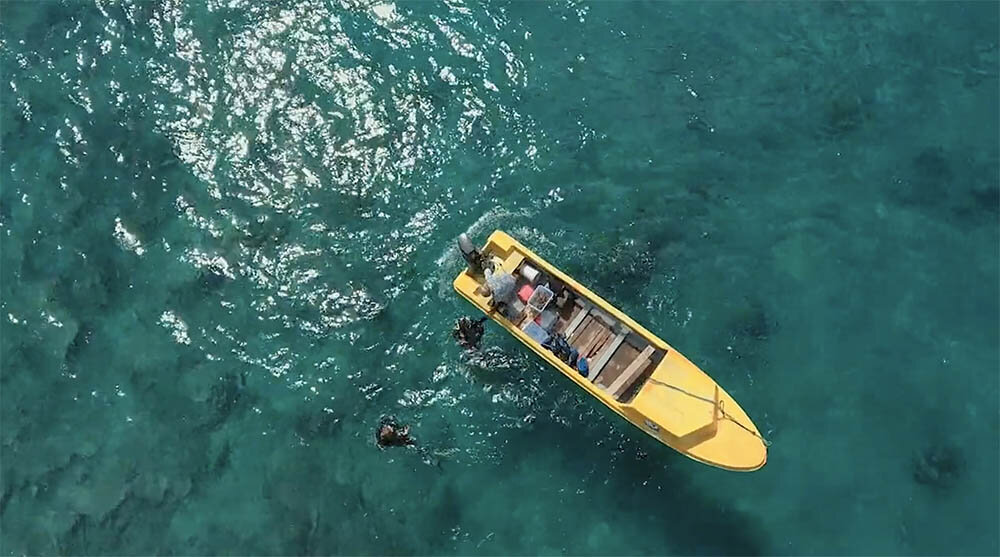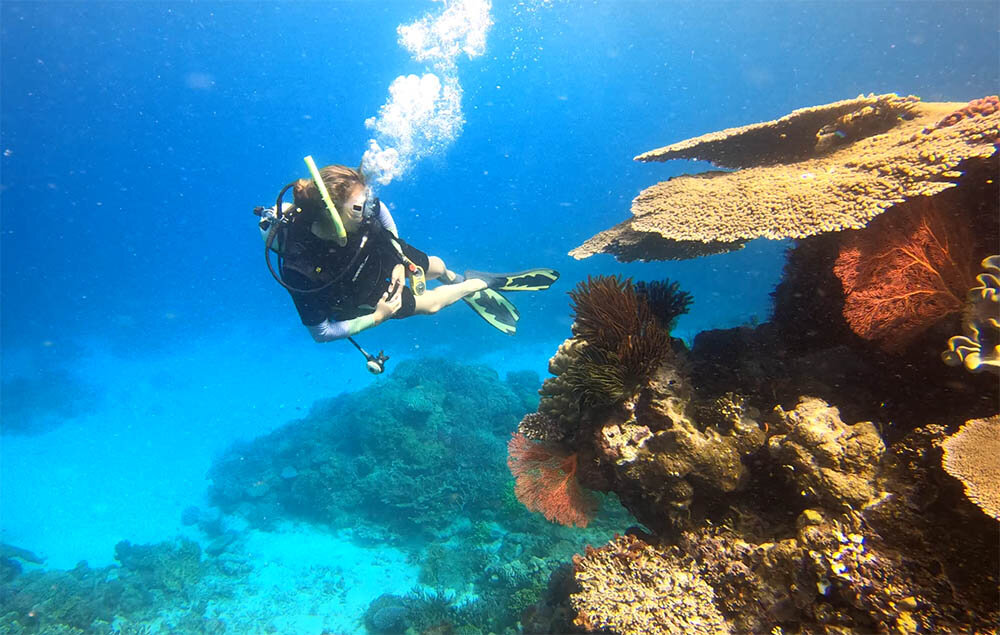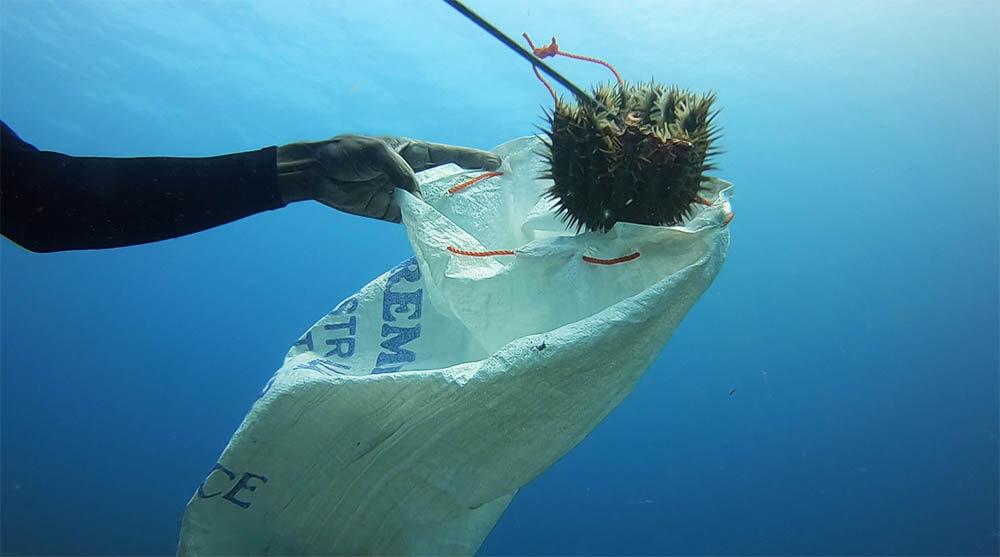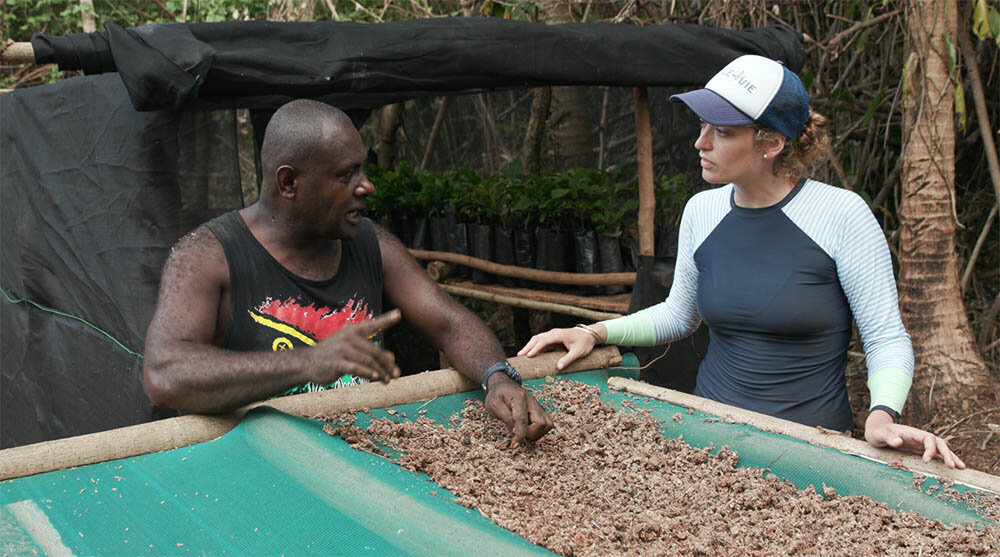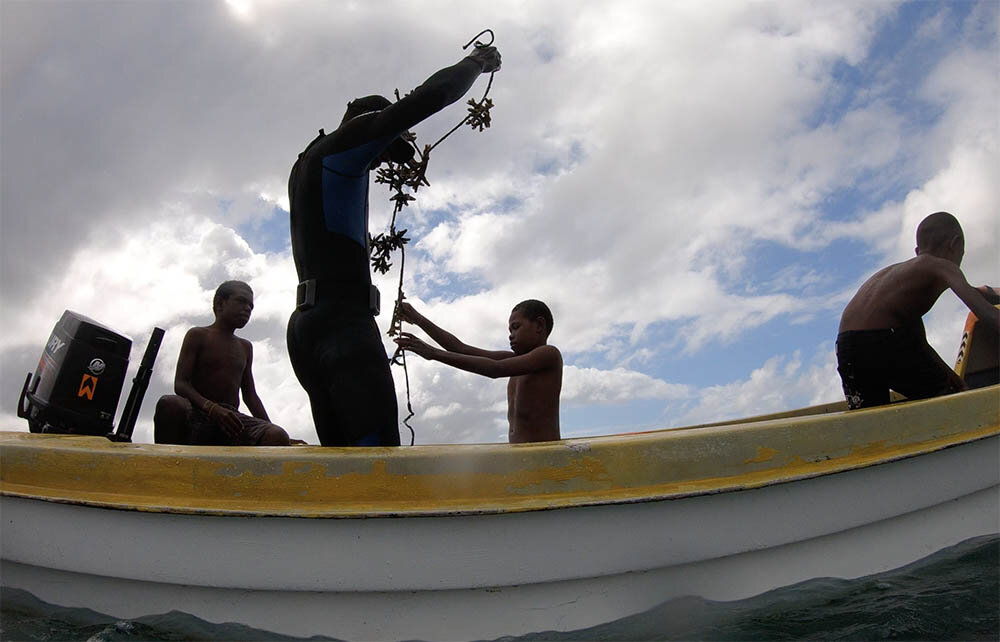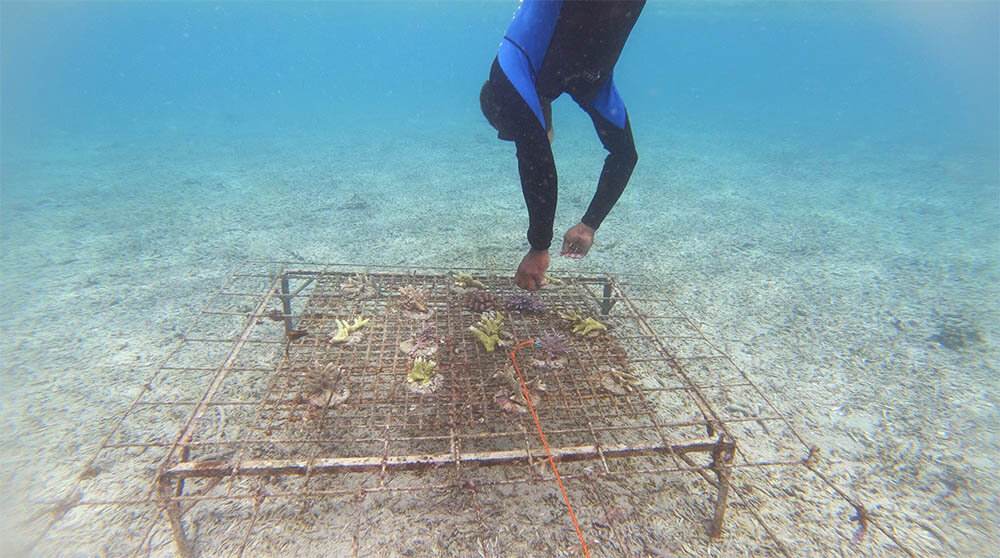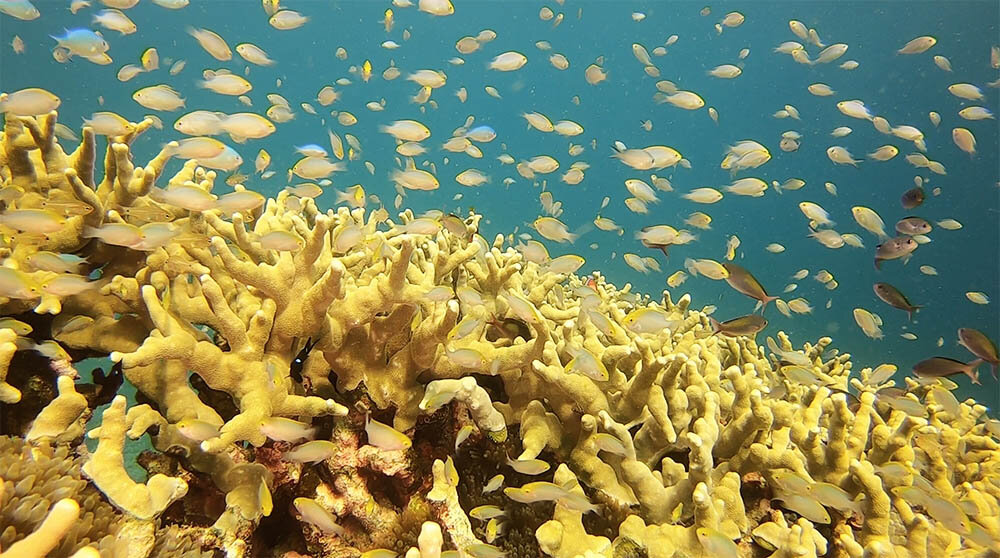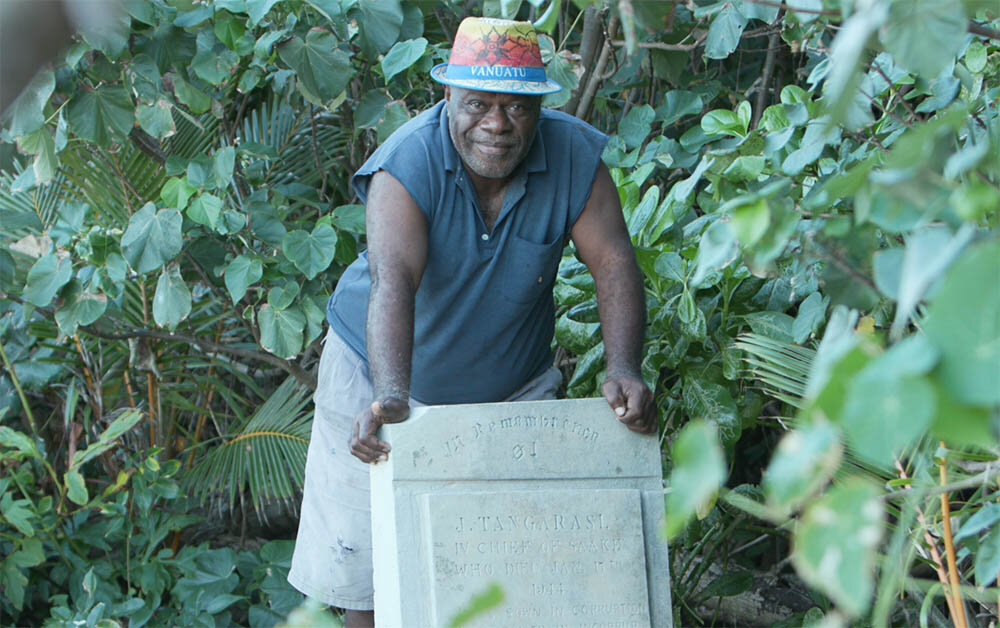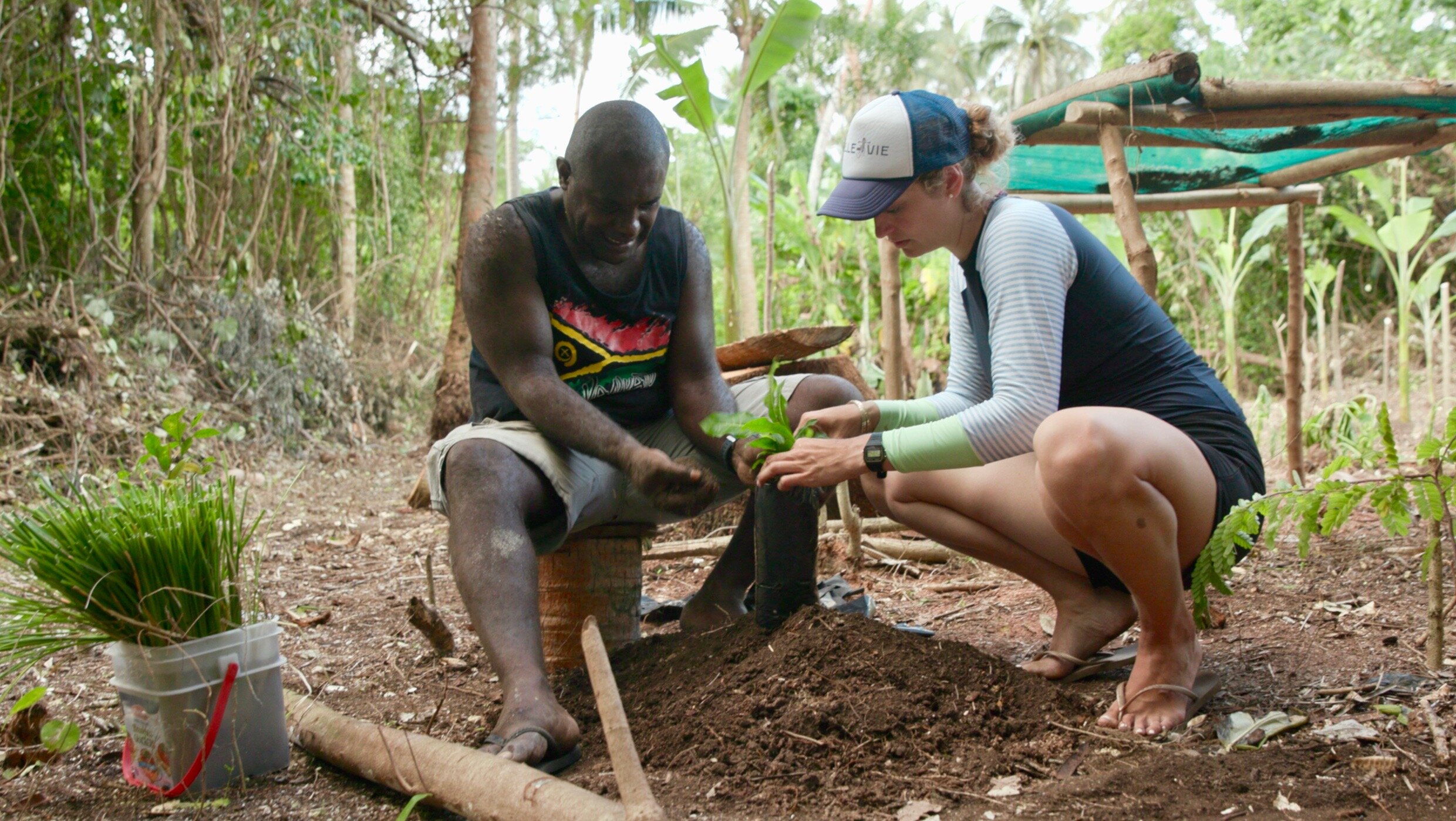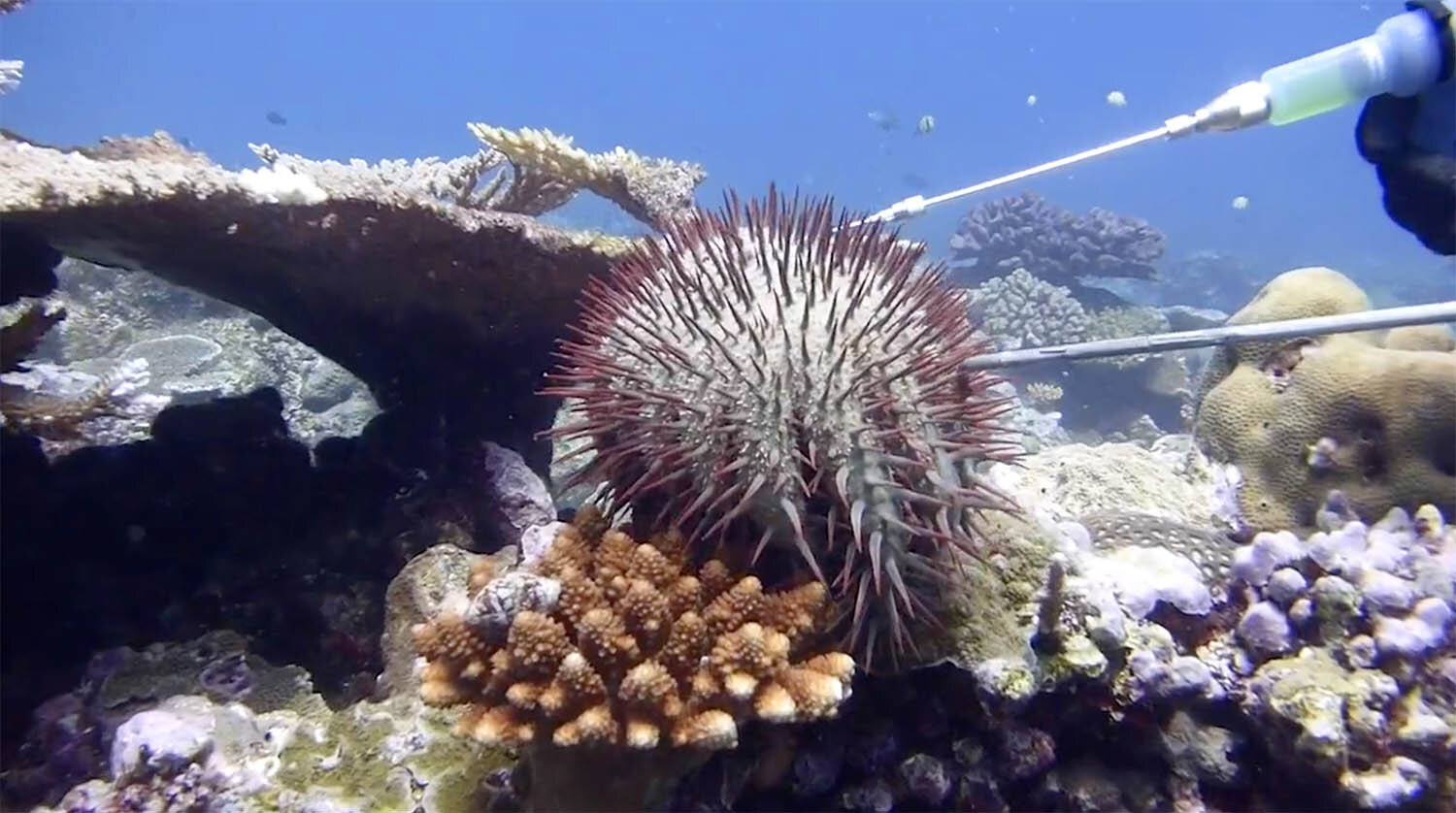ADAPTATION: Vanuatu
Coral reefs around the Pacific Island nation of Vanuatu are threatened by ongoing outbreaks of Crown-of-Thorns sea stars (COTS), which can devastate entire reef ecosystems.
Crown-of-Thorns (Acanthaster planci) are large, multiple-armed starfish that prey upon hard coral polyps. They receive their name from the venomous thorn-like spines that cover their outer surface. Though native to the Indo-Pacific region, outbreaks can occur when large densities of COTS take over a relatively concentrated area (1,500+ starfish per sq km). Outbreaks are becoming much more common due to overfishing, ocean acidification and shell tourism. Because they feed on the live tissue of hard corals, COT outbreaks have been considered the “most severe biological disturbance experienced by coral reefs across the Indo-Pacific” (de Dios et al. 2015).
In Vanuatu, several solutions to address this problem have been implemented by Nguna and Pele island community members over the last few years. They have ranged from village-wide COT removal efforts, to hypersaline and citric acid injections, to composting the starfish and using the fertilizer to plant fruit trees (see images below). These adaptive techniques are helping improve security in the face of climate change while simultaneously addressing reef health.
In 2018 I went to Nguna and Pele islands to document these efforts. Three local islanders, Tatu Whitesly, Willie Kenneth and John Ronneth, are at the helm of these initiatives and their work is nothing short of incredible. In addition to COT removal, Willie and Ronneth are managing impressive coral gardening projects. They are re-planting young corals in nurseries as a part of a coral reef climate change adaptation project. Devastated reefs are showing signs of recovery and regeneration thanks to a combination of coral gardening and replanting of healthy coral fragments.
Note: I first heard of this adaptation story through Rare’s Solution Search contest, Adapting to a Changing Environment. Among the submissions that year was a project spearheaded by SPC-GIZ in partnership with Vanuatu’s Nguna-Pele Marine and Land Protected Area Network on adaptation efforts associated with Crown-of-Thorns. Solution Search is a contest, a global crowdsourcing effort, a convening of success stories, and a capacity building initiative. It blends behavioral science, conservation, and community action. Learn more here.
Bagging & Composting Crown-of-Thorn Starfish
This GoPro video shows the process of hooking and bagging COTS underwater. Using a metal hook, the diver pulls the COT off of the coral and directs it into the bag, being careful to avoid skin contact. Once a diver has collected a bag full of COTS, the bag will be tied off. It can be left on the bottom of the reef for a few days until they die and decompose, or it can be brought to shore and further composted into an organic fertilizer. In the second image, Tatu is showing how he plants fruit tree saplings with COT-derived compost. Composting has been met with varied success, largely because of the high salt content in the COTS. This poses a problem for soil quality.
Injecting COTS
Another COT management technique is by way of acetic acid or citric acid injections. In this case the acid solution can be as simple as using vinegar or lime juice. When a diver delivers an injection of acid solution, it floods the COTS system and eventually leads to death. Injecting hypersaline solutions and oxbile have also been widely applied, though oxbile is more expensive and difficult to access for local communities.
Coral Gardening
Several community leaders have taken up coral gardening in an effort to restore coral reefs. This is done by cutting off fragments of healthy coral and affixing them to ropes underwater. Once the fragments grow to a healthy size, they can be attached to underwater coral beds for further propagation, or directly attached to existing coral reefs.
Photo Credits: Kyle Corea, Brooks McCutchen, Gavin Steele-McCutchen, Alizé Carrère
Capturing this story was made possible thanks to the generous support from the following organizations & people:
rare (NGO)
Tasaruru “Tatu” Whitely, Willie Kenneth, John Ronneth
Island Reach (Vanuatu-based NGO)
Sailaway Cruises (Vanuatu boat logistics)
GoPro (camera gear)
